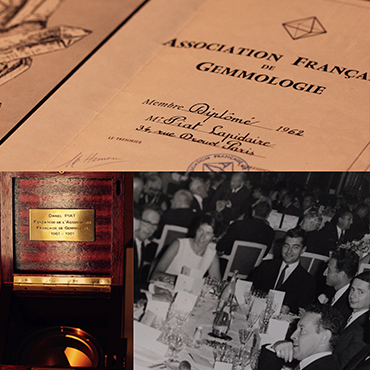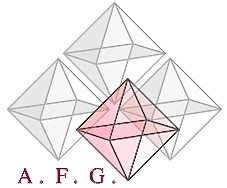This year, the Ministry of Agriculture, on which the mines depend, authorised the Chamber of Commerce laboratory to award a diploma with the aim of developing knowledge in gemology.
On the 23rd December 1961, Daniel Piat, recently graduated with honours, founded the French Association of Gemology. He was accompanied by M. Gobel – honorary president -, Jacques Rosenthal and Pierre Nedelec -vice- presidents-, Max Pelegrin – secretary – assisted by Jean Turisk and Michel Gaucher. The goal of the association was dual; to bring together gemology graduates and keep abreast of and circulate the latest news in the profession. So in January 1964, the first issue of the AFG was produced including a line that reads: ” Among the many beauties that nature gives us, the longest lasting is the magnificence of precious and fines stones. Their great seductivity is the result of an orchestration of all the special colours produced by their millions of planes of atoms. The light they hold glitters like a bouquet after crossing the different angles that refract optically in their facets. But a gem should not just retain the light, it must multiply it tenfold through the phenomenon of total reflection, an important factor of its beauty and radiance. This is where we introduce the delicate art of gem cutting. »
First distributed to members, it is today an internationally recognised journal in which scientists from around the world publish articles.
At that time, gemology was very confidential. The courses, initiated by Mr. Gobel after World War II, were taught exclusively in rue de Provence, Paris. Daniel Piat’s idea was to extend this teaching to 11,000 Province jewellers. The first mobile gemology course was created in 1962 in Nice, by Hubert Lagache, son of a jeweller from Lille. Each year, ten cities are chosen in France to provide this training, which is limited to 20 students. The concept is simple, Hubert Lagache lectures once a month for two hours and provides stones for the students to study. Each jeweller has the opportunity to observe the characteristic inlays that they probably would not have been able to see without this initiative. Since then, several gemmological schools have emerged.


